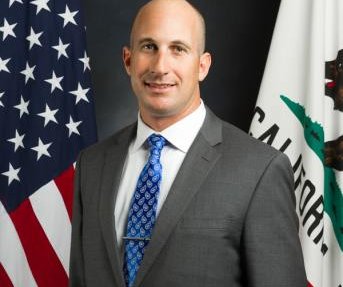With the average American spending nearly $14,600 per year on personal health care, the personal-finance website WalletHub has released its report on 2025’s Best and Worst States for Health Care, as well as expert commentary.
California came in at number 35 on the list. At the top was New Hampshire, the most affordable state for health care, followed by Rhode Island at number two, Minnesota, Iowa and Massachusetts rounding out the top five. Ranking at the bottom were Texas at number 47, Georgia, Alabama, Alaksa and Mississippi coming in as the least affordable.
In order to determine where Americans receive the highest-quality services at the best prices, WalletHub compared the 50 states and the District of Columbia across 44 key measures of health care cost, accessibility and outcome. The data set ranges from the average monthly insurance premium to physicians per capita to the share of insured population.
Health Care in California (1=Best; 25=Avg.):
Overall Rank: 35th
37th – Avg. Monthly Insurance Premium
45th – Hospital Beds per Capita
26th – Physicians per Capita
21st – Dentists per Capita
23rd – Percentage of Insured Adults
14th – Percentage of Insured Children
46th – Percentage of At-Risk Adults with No Routine Doctor Visit in Past Two Years
22nd – Percentage of Adults with No Dental Visit in Past Year
1st – Percentage of Medical Residents Retained
“Health care has two crucial components, cost and quality. The best health care in the nation isn’t helpful if it bankrupts the people who try to get it, and cheap health care isn’t worth paying for if it provides subpar or ineffective treatment. Therefore, the best states for health care are those that make high-quality care affordable, on top of providing many options for doctors and making insurance easily accessible,” said Chip Lupo, WalletHub Analyst. “New Hampshire is the best state for health care, with the fourth-lowest out-of-pocket medical spending in the country. Residents also have the lowest average monthly health insurance premium, at around $470. To top things off, New Hampshire has the fifth-lowest share of residents with coronary heart disease, third-lowest prevalence of strokes and the second-lowest prevalence of type-2 diabetes in the country.”
For the full report, visit: https://wallethub.com/edu/states-with-best-health-care/23457
Expert Commentary
What tips do you have for a person looking to find the right balance between the cost of their premiums and the level of coverage?
“In the ever-changing environment of tightening resources and limited availability of resources, those seeking the ‘right’ level of insurance coverage need to assess their current potential for healthcare coverage utilization. Purchasing coverage requires individuals to understand their healthcare needs for the coming year. They want to ensure that care is covered when needed, but not purchase excessive plans where benefits do not apply to their situation. High-deductible plans are growing popular to help balance cost and utilization between patient and insurer. These can be good options for people with cash resources or access to a health savings account, so they can pay for the basic routine care, but are covered in case of unforeseen added costs like hospitalization. Individuals who utilize high amounts of care, like those with chronic conditions, may benefit from a more comprehensive level of coverage.”
Michael Stowe, Ph.D, FACHE – Professor; Chair, Healthcare Programs, University of St. Francis
“To find the right balance between premiums and coverage, individuals should carefully evaluate their typical healthcare usage, including doctor visits, prescriptions, and any ongoing medical needs. High-deductible health plans (HDHPs) often come with lower premiums and may be suitable for those with minimal expected care needs; these plans are also compatible with Health Savings Accounts (HSAs), which offer tax advantages and can be used to pay for qualified medical expenses. For those with more frequent healthcare needs, higher-premium plans with lower out-of-pocket costs may provide better long-term value. Always compare the total expected annual costs, not just monthly premiums.”
Nancy Chun Feng, DBA – Professor, Suffolk University
What are the major issues facing healthcare in 2025?
“Medicaid cuts and elimination of enhanced marketplace subsidies will be devastating to a segment of the population. More enforcement of price transparency laws may or may not have any impact on spending. Pharmaceutical pricing legislation is in limbo, with seemingly contradictory moves by the Trump administration related to the Inflation Reduction Act and Medicare drug pricing, coupled with different approaches to regulate prices.”
Keith A. Joiner, M.D., M.P.H – Professor, University of Arizona
“The major issues facing healthcare are many. We must continue to deal with rising costs while reimbursement from insurance continues to decline, shifting costs to the insured. From the pandemic in 2020, we are dealing with a key shortage of individuals entering or staying in the workforce. This adds to the stress and quality of care for those who remain. We continue to deal with an aging population that burdens an already stressed delivery system. Issues like chronic diseases, long-term care, longevity, and the lack of workers in the general workforce to support the finances to pay for care. We must continue to work to implement stronger reimbursement mechanisms based on access and outcomes rather than just utilization. We must incentivize primary and preventive care rather than more expensive chronic care conditions. We must continue to invest and develop a broader focus on community-based care for all populations to increase access, especially for those traditionally underserved.”
Michael Stowe, Ph.D, FACHE – Professor; Chair, Healthcare Programs, University of St. Francis
What are the most important steps Americans can take to minimize health-related expenditures?
“Know your plan and your network. Get the app for your health plan and use it … Make certain that all the doctors involved with your treatment are in-network … Most all plans offer preventative health screenings at no charge, if the doctor is in-network. However, preventative care such as screenings, vaccinations and annual exams are excluded if the provider is out of network. People need to understand their RX drug plan and ask for generics when possible. When a generic is not available, ask the doctor to help with getting a low-cost alternative. People need to understand their benefits, and challenge bills. If a person goes in for a preventative procedure, such as a colonoscopy, and the facility submits the code to the insurance as a diagnostic code, the entire bill is now handled differently. There are several preventative screenings that are ‘no charge’ but when the same procedure is billed as diagnostic, now there is a charge. By understanding the deductible, the co-insurance and the out of pocket, individuals can budget out their worst-case scenario each year. People should be taking advantage of these free preventative screenings and getting a physical every year.”
Aleta Ostlund, M.A. – Lecturer, California State University, Long Beach
“To reduce healthcare expenses, individuals can focus on preventive care, choose in-network providers, and fully utilize plan benefits such as telehealth services and wellness programs. Contributing to Health Savings Accounts (HSAs) or Flexible Spending Accounts (FSAs) provides tax savings while covering out-of-pocket medical expenses. Comparing costs for procedures, using urgent care instead of emergency rooms when appropriate, and reviewing medical bills for accuracy are also practical strategies. Maintaining a healthy lifestyle remains one of the most effective ways to lower long-term healthcare spending.”
Nancy Chun Feng, DBA – Professor, Suffolk University





